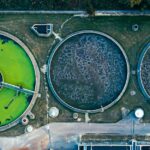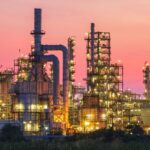Today, moving bed biofilm reactor (MBBR) processes are widespread throughout the wastewater treatment industry. These processes rely on media with a high surface area to carry biofilm and achieve the same results as conventional bioreactors with reduced space requirements. MBBR mixing ensures that the media and influent are distributed uniformly throughout the reactor.
Wastewater treatment facilities can adapt MBBRs to fulfill many process requirements. They can replace activated sludge processes and are also an attractive option for biological nitrogen removal. Many wastewater treatment facilities use a series of MBBRs with both anaerobic and aerobic steps. MBBR mixing must address several challenges and constraints to ensure process effectiveness and efficiency while also offering energy savings compared to dispersed air mixing.
Key MBBR Design Considerations
An MBBR can achieve better performance by volume than comparable suspended-growth systems. However, that performance relies on maintaining a high proportion of active biomass. MBBR mixing can significantly impact active biomass, as shear can lead to the reduction of both biofilm area and thickness.
The effective biofilm area is a key design parameter for MBBRs. Media are designed with high surface areas to provide the highest possible proportion of active biomass. Damage and wear to the media reduce this surface area, lowering operational efficiency and eventually requiring the costly replacement of the media. Proper mixer design is essential to minimize this wear.
MBBR processes are continuous flow and rely on effective mixing to achieve uniformity and avoid dead zones. Mixing must be capable of dispersing the media throughout the reactor volume while also ensuring that parameters like dissolved oxygen, temperature, pH, and ammonia and nitrate levels are uniform throughout.
Many wastewater treatment processes rely on aeration to provide mixing, but this generally isn’t the right option for MBBR processes. In aerobic processes, dispersed air introduced for aeration does contribute to mixing. However, the aeration required to achieve sufficient mixing is typically much greater than the aeration required to meet oxygen demand.
Running a compressor to achieve dispersed air mixing requires substantially more energy consumption than a mechanical mixer for the same application. This makes sizing aerators to meet oxygen demands and then relying on mechanical mixing a more cost-effective option for aerobic MBBR systems. In the case of anaerobic MBBR systems, mixing via dispersed air isn’t an option in any case.
Designing Effective MBBR Mixing
The mixing solution needs to meet two competing requirements. Mixing must be powerful enough to achieve uniformity and dispersion while also gentle enough to allow bugs to grow on the media. Dynamix provides an effective solution for MBBR mixing through careful impeller and configuration design.
Careful impeller design also prevents rafting, which is a common issue with MBBR media, which are slightly less dense than water. Axial flow ensures that media and active biomass are evenly dispersed throughout the reactor volume to achieve higher throughput and reduce hydraulic retention time.
MBBR mixing design also requires careful attention to the material of construction. The unique influent compositions of municipal, industrial, and agricultural wastewater treatment lead to varied wear and corrosion requirements.
Engineered MBBR Mixing Solutions From Dynamix
Individual MBBR mixing requirements vary depending on scale and application. Dynamix provides engineered solutions that address these unique requirements. Our team of engineers develops mixer designs and configurations that take every aspect of your process into account. You can contact Dynamix today to learn more about our MBBR mixing solutions.





